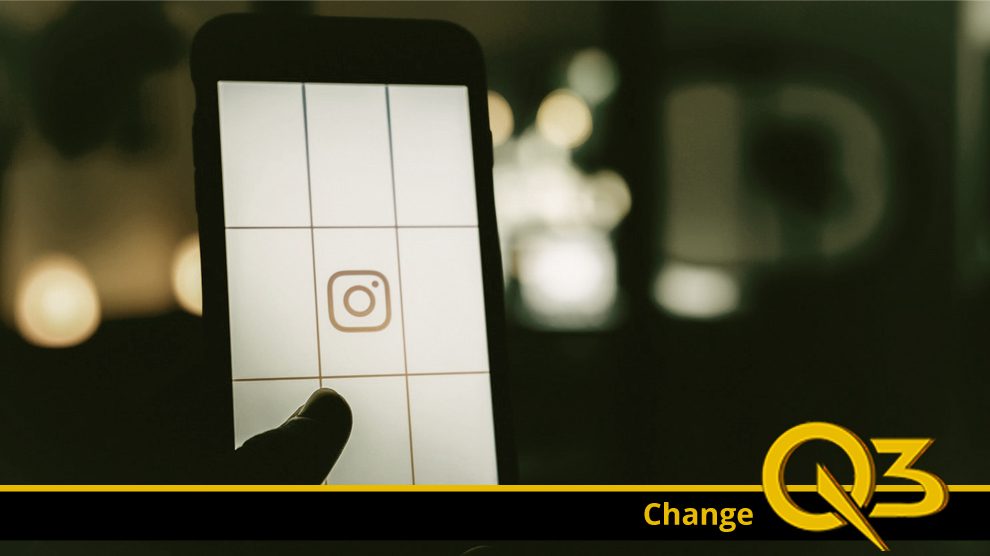by Alys Hewitt
The transformation of photography during the digital age is unprecedented, and along with the advent of new technologies and tools which have altered the way in which photographs are taken, Instagram has emerged as a platform for sharing and curating these creations on a mass scale. But just how profoundly has it affected the art of photography as we know it?
Digital technologies have rendered the medium of photography more accessible than ever. The archetype of the steady-handed photographer wielding a Pentax has evolved into the zealous millennial, meticulously documenting their day via smartphone. We are told that, in todayÔÇÖs culture, anybody can be a photographer, with the tools of the trade having become more within reach than ever; and platforms such as Instagram provide endless opportunities for sharing, documenting and telling stories via the captured image. Aspiring photographers are no longer required to learn as many practical skills as their predecessors and can produce and edit photographs with comparative ease. ┬áAnd crucially, thanks to Instagram, neither do they have to look very far in terms of publishing and disseminating their photographs to a mass audience.
Yet despite this new-found accessibility, many have resisted the momentum of Instagram, criticising the role of the platform and its sheer proliferation of images as diminishing the value, authenticity and power of a photograph. After all, how are we to distinguish what a quality photograph is in an age where we are constantly bombarded with images? And how do we assess the integrity and authenticity of photography on such a hyper-curated platform? This also goes hand in hand with the changing ways in which we are experiencing photography and other forms of art. It could be argued that Instagram and digital culture in general has perhaps diminished the sense of spectacle in observing an image. Galleries were once the primary place in which people viewed the work of renowned photographers, and the very setting of a gallery demands an audience to be confronted by, to take in and think about a photograph, whether it be shocking or challenging or complex. Some might argue that this has been lost in an age of scrolling and ÔÇÿimage overloadÔÇÖ. But that being said, galleries still thrive and photography is still a celebrated medium; there are simply more varied ways to consume and respond to images outside of established settings.
And no matter how much Instagram might be changing the way in which photography is experienced, it is undeniable that more people than ever are being exposed to the art form. Both established and amateur photographers, artists and photojournalists are using Instagram as a platform, and isnÔÇÖt that a great thing, both for the photographer and their audience? ShouldnÔÇÖt artists be given the opportunity to disseminate their work to as many people as possible, and shouldnÔÇÖt we all be able to experience art from the comfort of our own homes? This, in my view, is one of the defining features of Instagram and has helped transform the world of art and photography ÔÇô which has been the target of various accusations of elitism over the years ÔÇô in an overwhelmingly positive sense.
There is an immediacy and sense of instant gratification underpinning Instagram which is perhaps comparable to the invention of the Polaroid camera; millions of people capturing millions of fleeting moments, rather than a single significant event. Whilst the medium of photography might have once been about capturing a moment in time, now we have the ability to capture any moment at any time, and Instagram enables us to embrace mundanity and recognise the visually appealing aspects of everyday life. No longer do we have to wait for the perfect photographic opportunity – there is opportunity everywhere. And whilst thousands might photograph the same object or event, each perspective and interpretation is likely to be different, which is what makes the platform exciting.
Change is inevitable – just as social media and the digital sphere has demanded the adaptation of other art forms, such as music or filmmaking, photography has taken on a completely different guise as equipment has become smaller, more compact and more accessible, and as society has become arguably more image-conscious than ever before. Instagram has certainly had a huge impact on the art of photography, but it is largely symptomatic of the technological changes happening around it, and its prominence would not be possible were it not for these advancements. The medium is also not willing to let go of its past just yet. Instagram boasts a growing community of people sharing film and found photography; there are, for instance, over 19 million photos tagged #35mm and 11 million tagged #filmisnotdead on the platform, which suggests that all is not lost for visual nostalgia.
Ultimately, Instagram provides a space for photographers to curate and publicise their work in new ways ÔÇô part of its appeal is that it is a blank canvas, around which artists can build their own brand in a way that suits them. Some might, understandably, be reluctant to adapt to this (Instagram definitely has its downsides) but it cannot be denied that it has brought about a significant shift in the ways in which photography is produced, shared and consumed, affecting both the photographer and the beholder.









